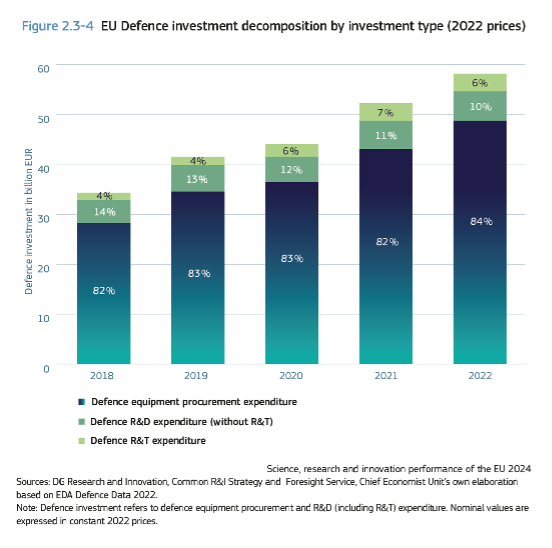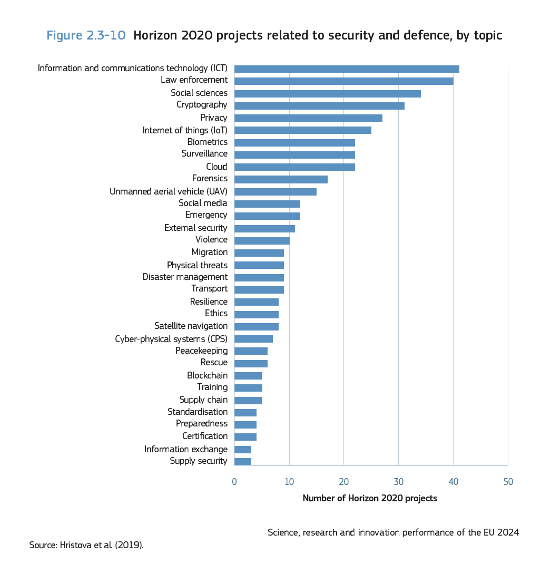Both the EU leaders’ strategic agenda for 2024-2029 and a Commission report underline the need to develop synergies between civilian and defence research

The pressure is building for the EU to embrace dual-use research, with EU leaders including research and innovation in dual-use technologies in the 2024-2029 agenda for the first time and the Science, Research and Innovation Performance (SRIP) report, released by the Commission last week, underlining the need for the EU to take defence R&D more seriously.
EU investment in defence has seen a steady increase over the past five years, but most spending is on equipment. Meanwhile, spending on basic and applied research, and technology validation has fallen behind.

The SRIP report says that to turn the tide, the EU should harness the untapped potential of dual-use technologies. However, policymakers and the researcher community are yet to agree on a palatable way of doing this.
A Commission white paper earlier this year setting out three possible approaches to handling dual-use technologies in the next framework research programme, FP10, sparked concerns amongst researchers who prefer to keep FP10 exclusively civilian, or want further debate and clarity on the matter.
The gap between the ambitions of the European Commission and of member states, such as Poland that want to see increased dual-use research, and the reservations of researchers, appears to be widening.
But it is also the case that the distinction between civil and military applications is increasingly blurred.
The SRIP report points to a major change in the dynamics of defence innovation, with more groundbreaking technologies emerging from the private sector, rather than the defence industry. This trend, where technologies initially applied in civilian settings are swiftly translated to boost military effectiveness, is ushering in a new era for defence.
The EU funding landscape stands in stark contrast to this shift. Under Horizon Europe and its predecessors, there has been an exclusive focus on research for civilian purposes. Meanwhile, the European Defence Fund was initially set up to back defence-related research only, though the Commission hopes coordination between the programmes could promote dual-use technology in the future.
The SRIP report says that diversifying FP10 beyond solely civilian applications could enhance synergies between civilian and defence research, pointing to projects funded in Horizon 2020 that turn out to have dual-use potential. These are in areas such as artificial intelligence, quantum, biotechnology, information technology and robotics.
However, many other fields could also be relevant, given only 60% of research with potential dual-use applications was funded through Horizon 2020's dedicated civil security section. This indicates that potential dual-use projects are dispersed throughout the programme.

In view of the many research fields that have potential dual-use applications, opening up the EU framework programme to dual-use would have a great impact on the design of the FP10.
Now that dual-use research has made it onto the EU leaders’ strategic agenda following the Commission’s push to re-evaluate dual-use policies, researchers are getting drawn into what has become a top priority issue.
And while some universities and research organisations are dipping their toes into the European Defence Fund, research and innovation stakeholders might find the boot is on the other foot, and the defence sector starts to take a closer interest in FP10.





 A unique international forum for public research organisations and companies to connect their external engagement with strategic interests around their R&D system.
A unique international forum for public research organisations and companies to connect their external engagement with strategic interests around their R&D system.